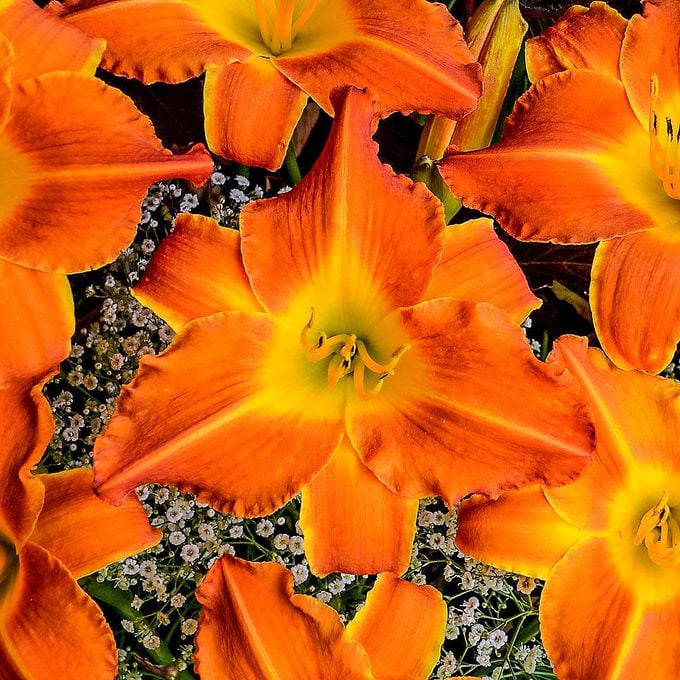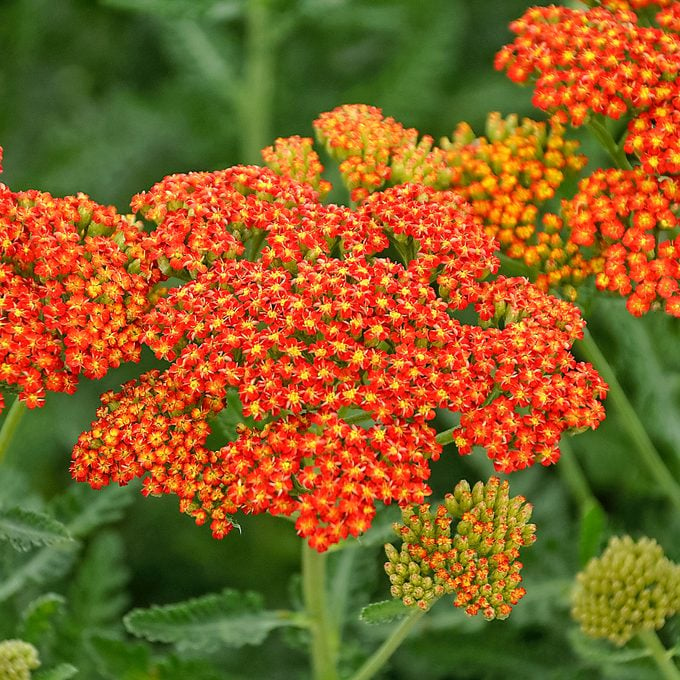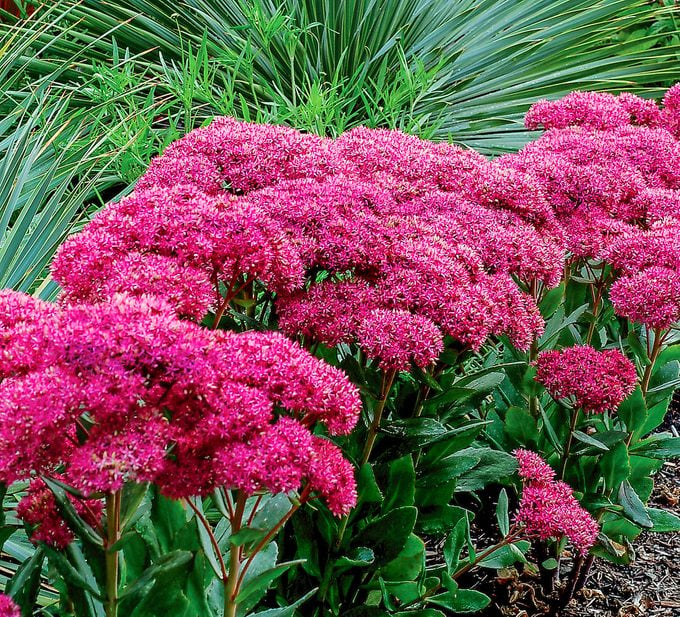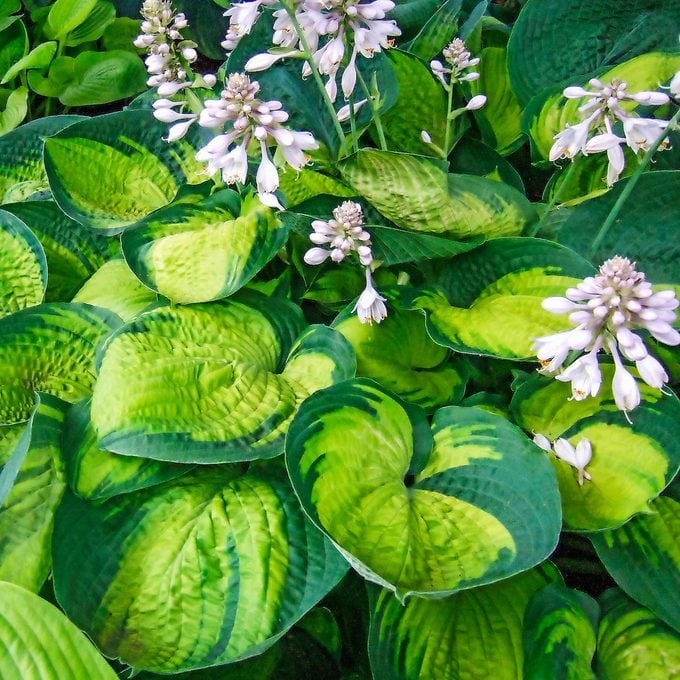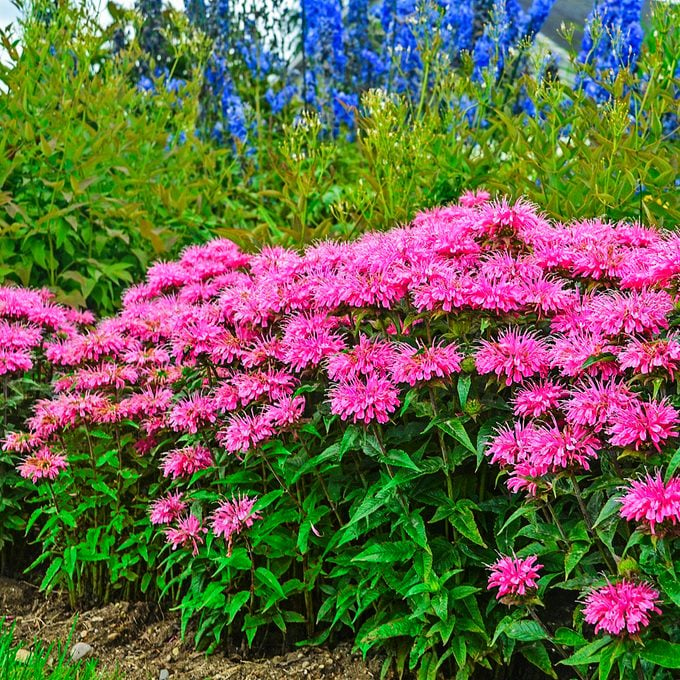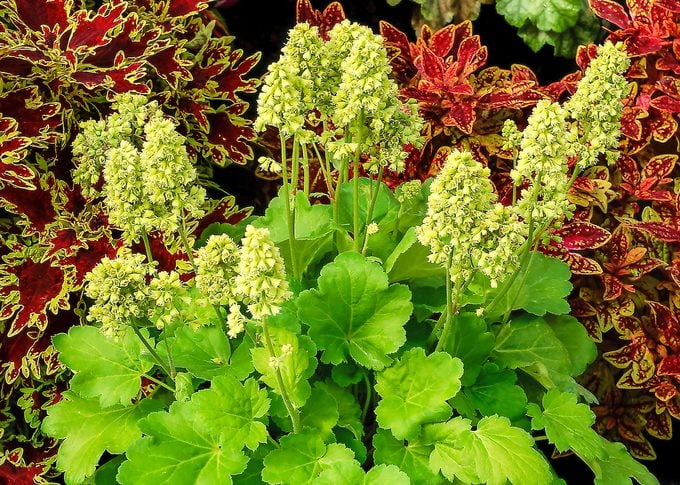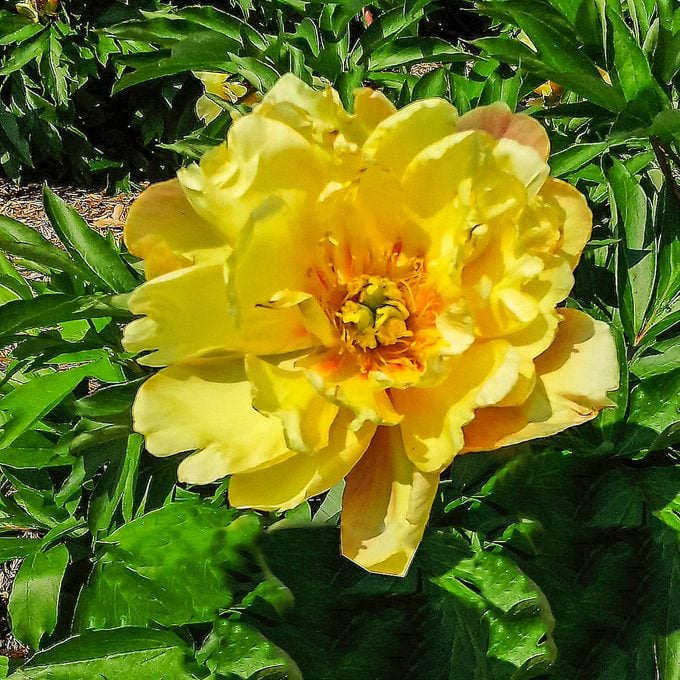Top 16 Easy Flowers Anyone Can Grow
Updated: May 20, 2022
Tired of flowers that won't bloom or can't stand a dry spell? Try one or all of these easy flowers to grow for a gorgeous garden with minimal effort.
As gardeners, we are constantly faced with challenges: plants that won’t bloom, flowers that die after a late-spring frost, droughts that wipe out entire flower beds. Gardening definitely has its fair share of difficulties, so every once in a while it’s nice to rely on flowers that thrive with minimal time and effort. These 16 easy flowers to grow are trouble-free and suitable for nearly any North American backyard.
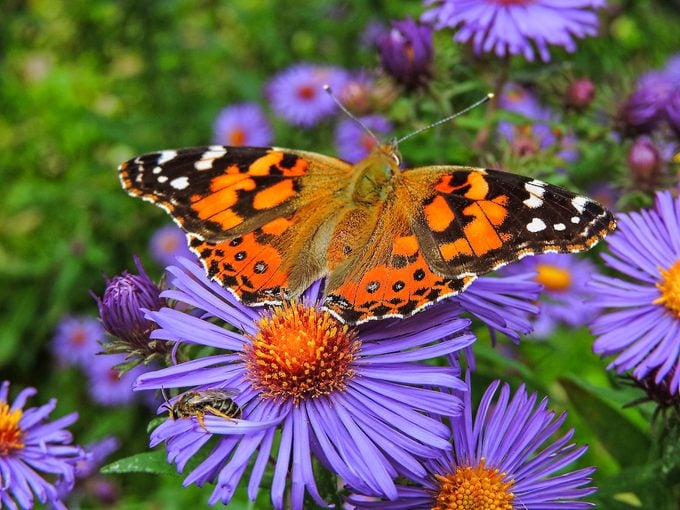
Aster
Aster or Symphyotrichum Zones 3 to 8
With more than 250 varieties, you’re bound to find a cultivar that’s suited to your space. The extensive range of sizes and colors available makes this plant one of the most popular late-season bloomers.
Why we love it: From miniature alpine plants to giants that tower up to 6 feet, asters are easy flowers to grow that brighten any fall landscape, especially when butterflies come to visit. Check out more late-blooming fall flowers that attract butterflies.
Daylily
Hemerocallis, Zones 3 to 10
This summer bloomer is cherished for its reliability. And with thousands of cultivars out there, gardeners have almost limitless options. Though individual blossoms last just a day, many hybrids flower repeatedly all season long.
Why we love it: These plants were made for sharing. Divide daylilies every three to five years to revitalize and prevent the fleshy roots from becoming too tough. Plus hummingbirds love the tube-shaped blooms!
Yarrow
Achillea, Zones 3 to 9
Yarrow produces long-lasting, easy to grow flowers that come into their own once the weather is consistently warm. Suited to most growing conditions, yarrow provides a long season of blooms all the way into fall. Do a little research before you buy—it’s best to stay away from aggressive varieties.
Why we love it: The padlike bloom clusters are perfect places for butterflies to land and sip from the nectar-filled flowers.
Sedum
Sedum, Zones 3 to 10
Take a close look and you’ll notice that this plant’s flower heads are made up of little star-shaped blooms. Since the plants range from 3 inches to 3 feet high, some species work well as ground covers, while others make excellent border plants.
Why we love it: One popular sedum variety, Autumn Joy, has broccoli-shaped light green flower heads that slowly change to pink and deepen to burgundy. Later, the seeds feed hungry songbirds. Check out low-maintenance landscaping ideas for your yard.
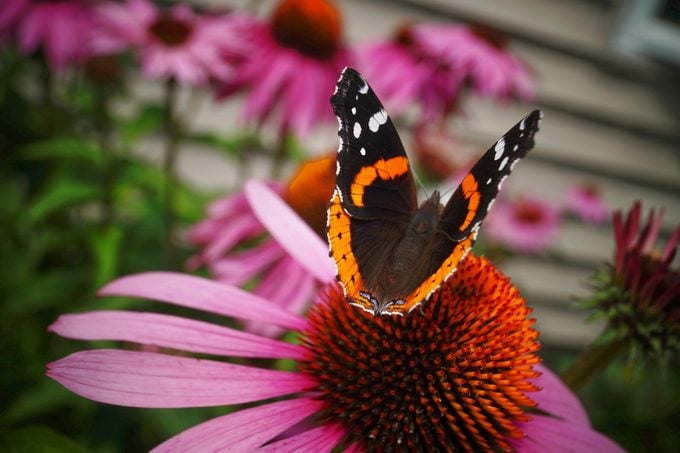
Coneflower
Echinacea, Zones 3 to 9
Its sweet homey nature has made coneflower a garden staple. Growing about 2 to 4 feet high and 2 feet wide, this colorful bloomer is the perfect companion plant in just about any garden, and tolerates drought. Give it well-draining soil and watch it thrive in full sun as well as partial shade.
Why we love it: Songbirds nibble on the seeds, and butterflies and hummingbirds sip nectar well into fall. In winter, the remaining seed heads provide an interesting garden focal point. Learn how to attract birds and butterflies with coneflowers.
Hosta
Hosta, Zones 3 to 8
The ultimate low-care shade plant, hosta cultivars come with endless varieties of leaf shapes, patterns, textures and colors. Easily divided, hosta is perfect for the budget-minded. It forms a dense, leafy clump, with blossoms rising up to 3 feet above the foliage. Some hostas tolerate sun, but partial shade produces the most handsome, longest-lasting foliage.
Why we love it: The small, dainty blooms are just the right size for hungry hummingbirds.
Bee Balm
Monarda, Zones 3 to 9
This unusual beauty grows up to 4 feet tall and starts flowering in midsummer, inviting hummingbirds, butterflies and bees to your backyard. Plants come with pink, red, white or purple blooms and reseed readily. Choose varieties resistant to mildew (such as Marshall’s Delight or Jacob Cline) for best results.
Why we love it: Skip deadheading! Songbirds stop by to eat the seeds that appear once the petals die back. Check out the top 10 plants for bees and pollinators.
Coral Bells
Heuchera, Zones 3 to 9
Coral bells’ tall, airy flower clusters tower elegantly above mounds of evergreen foliage that comes in a rainbow of colors. This easy flower to grow works especially well in borders and containers, and it thrives in sun or shade.
Why we love it: It’s easy to increase hummingbird traffic in the backyard and extend the blooming season by clipping off spent stems to encourage new growth. Check out the top 10 shade tolerant coral bells.
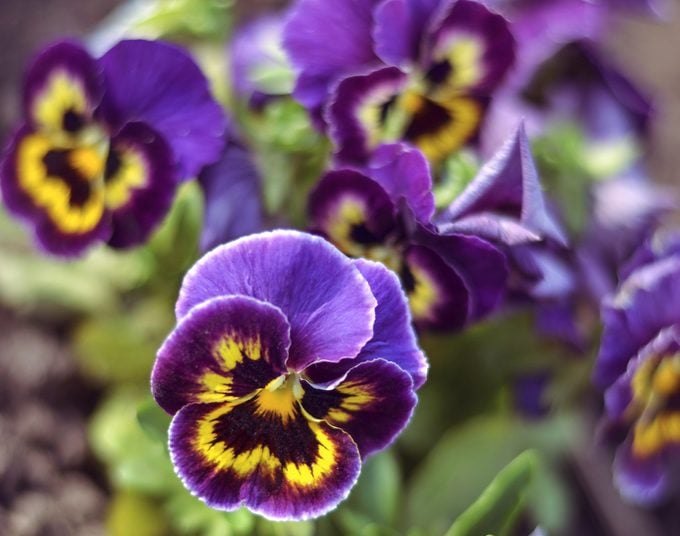
Pansy
Viola x wittrockiana, annual
This colorful bloomer is best known for the whiskered “faces” that mark many of the flowers. The majority of pansy varieties are annuals, though some live longer. Most perform best in cooler weather, so in warm climates, some cultivars are grown as winter annuals.
Why we love it: Pansies are easy flowers to grow in containers where they thrive with little care.
Peony
Paeonia, Zones 3 to 9
A peony’s fresh, heady scent simply can’t be beat. In late spring, bushy plants burst with lush, showy purple, white, red, yellow or pink blooms that make this flower a favorite choice to use in colorful beds and bouquets. Hundreds of peony hybrids are available.
Why we love it: The giant blooms offer loads of sweetness to butterflies and hummingbirds. Check out more super fragrant flowers that pollinators love.
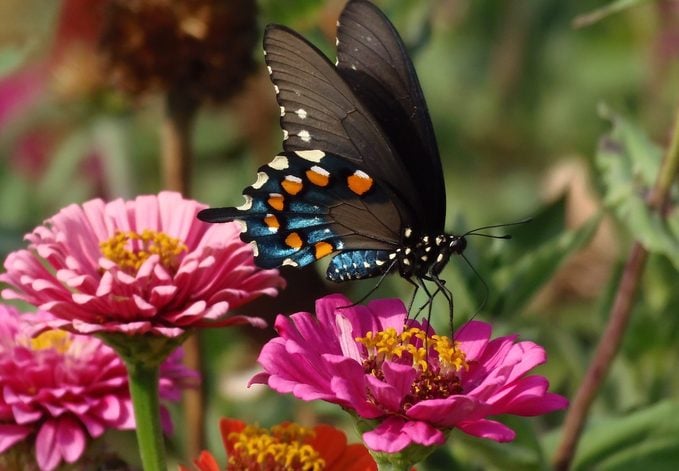
Zinnia
Zinnia Elegans, annual
With heights from 6 inches to 3 feet, there’s a zinnia for every garden. These are such easy flowers to grow—just direct sow seeds in a flower bed or a pot after the last frost. And with such a range of colors—red, yellow, orange, chartreuse, pink, lavender, white—there’s a zinnia for every taste as well. Use the smaller types as edging plants and larger varieties in the back of beds. Some can even work as barriers or privacy screens.
Why we love it: With zinnia seeds, you create a summer-long parade of colors.
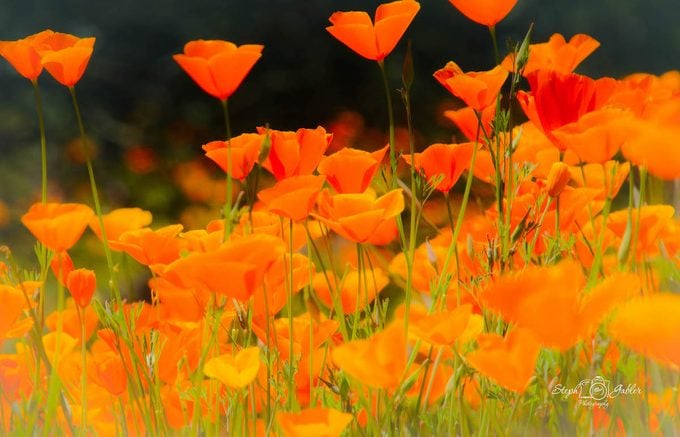
California Poppy
Eschscholzia californica, annual
Sweeping across the arid foothills and valleys west of the Sierra Nevada, a sea of golden-orange California poppies lights up the landscape each spring. California poppies bloom more prolifically with the help of a little deadheading. Just a few spent flowers on the stems to limit reseeding.
Why we love it: The delicate, nodding blooms are ideal in rock and cottage gardens, rather than in formal flower beds. Check out more drought-tolerant plants that can handle dry weather.
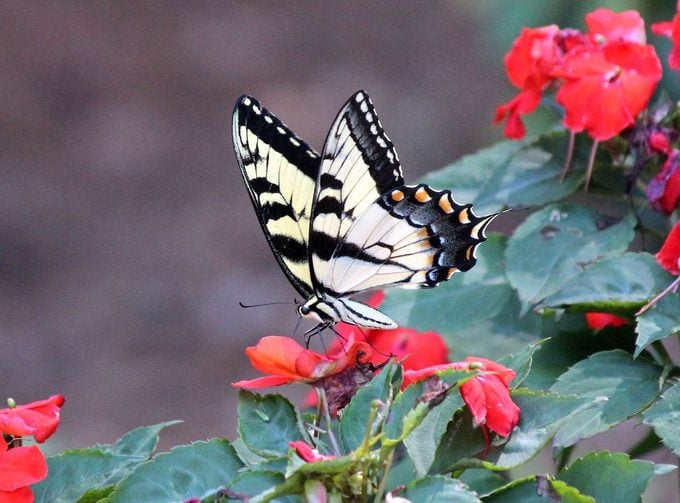
Impatiens
Impatiens, annual in most zones
Reliable impatiens are shade-garden favorites throughout North America, and quickly grow to fill in bare areas with undulating mounds of color. Once planted, impatiens need very little care. Plants bloom from spring to first frost and, unlike some other annuals, require no deadheading.
Why we love it: New Guinea impatiens provides bold color in shade.
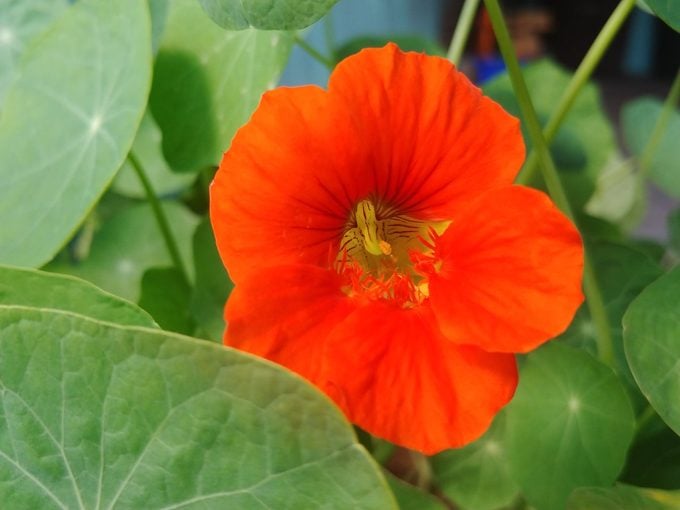
Nasturtium
Tropaeolum • annual
This cheerful flower thrives on neglect. Once it’s established, the nasturtium performs best when left alone, providing vivid color from spring through frost. Some types have compact, mounded growing habits, while others are good climbers.
Why we love it: This edible flower also makes a zesty addition to a green salad.
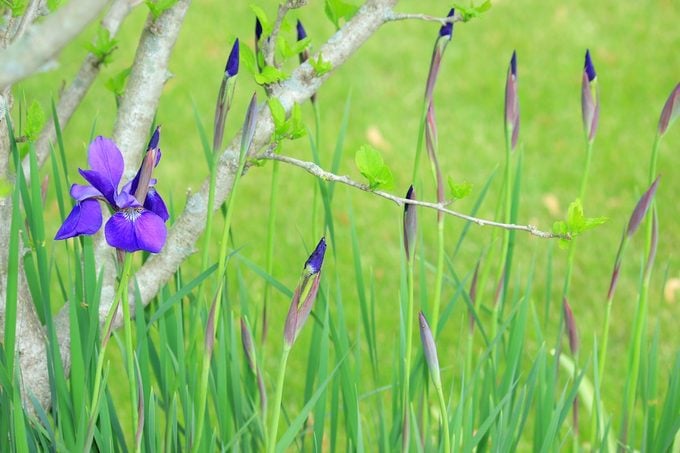
Siberian Iris
Iris sibirica, Zones 3 to 9
An easy to grow flower garden staple, Siberian iris produces white or jewel-toned flowers that can be planted in formal flower beds or naturalized for a more rustic look.
Why we love it: Siberian iris is a good choice to plant in areas with moist soil. Discover the types of flower bulbs that gardeners should grow.
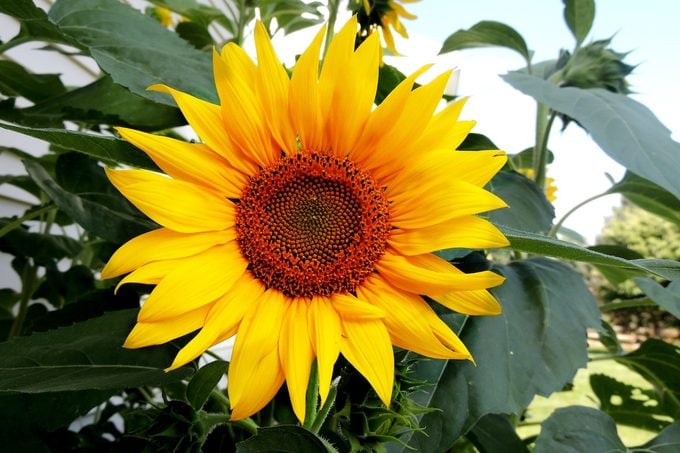
Sunflower
Helianthus annuus, annual
There’s something about a sunflower’s bright face that makes you feel good. And when it comes to kids, there are few plants that draw more “oohs” and “aahs” than these towering blooms, which can soar up to 15 feet! These easy flowers to grow range from red to yellow to white.
Why we love it: The centers are composed of tiny, nectar-producing flower clusters that attract butterflies and hummingbirds, and many birds eat the seeds.

